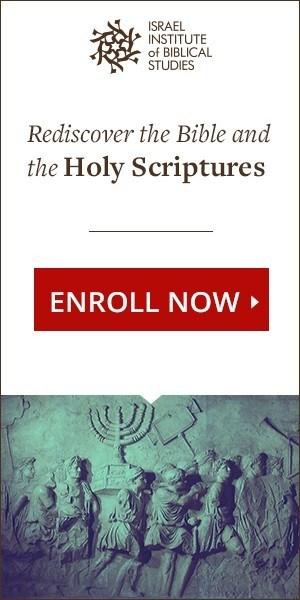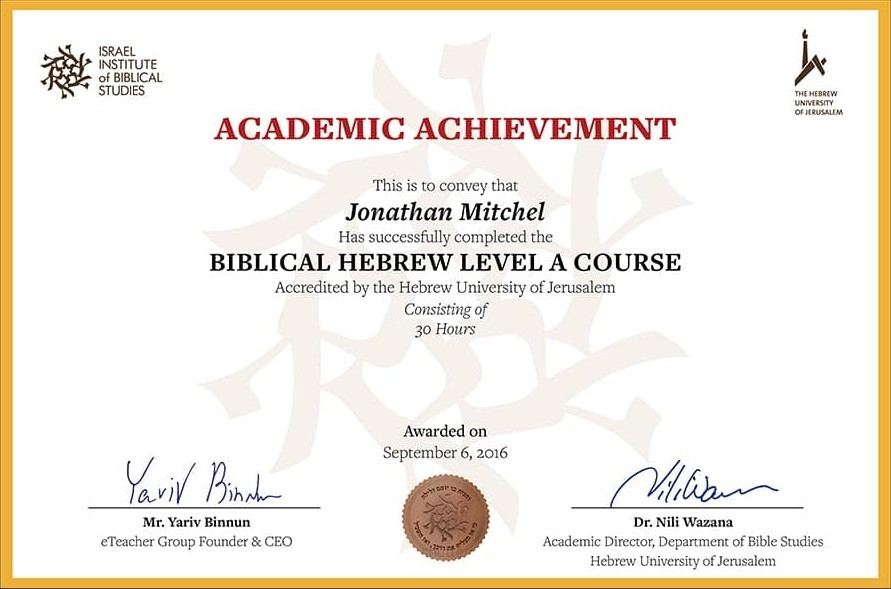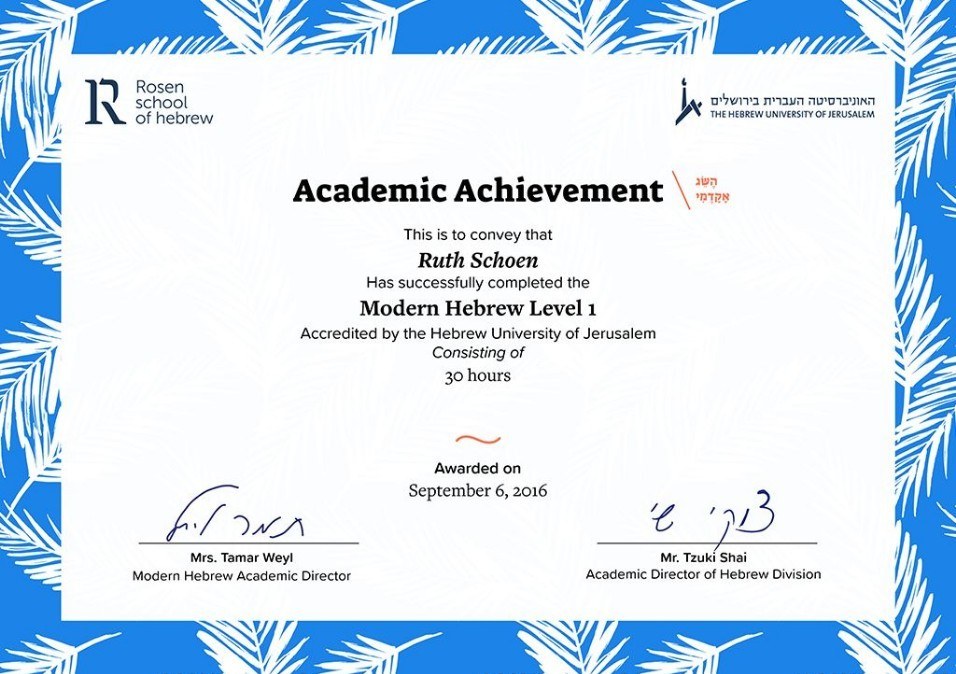
Since the dramatic resurrection of the hypothetically lifeless Hebrew Language in the 19th century, a period of linguistic ascendancy and relevance has ensued. The 9 million speakers of the Hebrew language evidences this at present. However, different schools of thoughts have arisen to challenge the originality of the more recent language. They have done this by comparing Ancient Hebrew vs. Modern Hebrew on all fronts. These analyses have made this debatable subject matter extremely interesting and enlightening.
The Best Schools for Learning Hebrew
Different schools teach people the Hebrew language. Nonetheless, two schools have stood out as among the very best to learn from. They are:
 Israel Institute of Biblical Studies: Born out of the need to make the Holy Bible within reach for the common person, this school has developed language courses for biblical study. Therefore, it has become possible to learn the Old and New Testaments in their original languages with the help of teachers from the Holy Land.
Israel Institute of Biblical Studies: Born out of the need to make the Holy Bible within reach for the common person, this school has developed language courses for biblical study. Therefore, it has become possible to learn the Old and New Testaments in their original languages with the help of teachers from the Holy Land.
With partnership from the Hebrew University of Jerusalem, this school has formed a culture of excellence from years of experience. It has truly followed its philosophy of reaching to people anytime, anywhere with the latest technology. The academy has two departments that offer fully accredited courses.
I. The department of Bible and Jewish Studies: Courses offered in this department include:
(a) Holy Land Studies
(b) Jewish Studies
(c) Bible Studies
II. The Department of Biblical Languages: Courses offered in this department include:
(a) Biblical Hebrew
(b) Biblical Greek
(c) Modern Hebrew
(d) Biblical Aramaic
(e) Yiddish
The results of these courses have been outstanding and life-transforming. Students have benefited from the experience through the challenging comprehensive study of the Word of God.
 Rosen School of Hebrew: Viewing Hebrew as far more than a language, this school, now turned family got its name from Aharon Rosen. Rosen was a famous Hebrew teacher. Also collaborating with the Hebrew University of Jerusalem, the school offers fully accredited courses and integrates traditional experiences with modern innovation.
Rosen School of Hebrew: Viewing Hebrew as far more than a language, this school, now turned family got its name from Aharon Rosen. Rosen was a famous Hebrew teacher. Also collaborating with the Hebrew University of Jerusalem, the school offers fully accredited courses and integrates traditional experiences with modern innovation.
Following a multi-stage curriculum created by Rosen, the school employs the “Hebrew in Hebrew” method of teaching. Over 50 professors have taught tens of thousands of students across the 550 yearly classes since its inception in 2000. Rosen School of Hebrew offers the following courses:
I. Modern Hebrew
II. Biblical Hebrew
III. Yiddish
The school also has a Hebrew for kids program. Several students have praised the school’s performance in their reviews.
The Finest Teachers of Hebrew
The driving forces behind the courses from the Israel Institute of Biblical Studies and the Rosen School of Hebrew are obviously the teachers. Passionate and caring, they ensure students get the maximum support needed while learning. A few of the teachers are:
§ Tamar Weyl: Tamar is an academic director and developer of Modern Hebrew in Israel Institute of Biblical Studies. She has occupied several positions at the Hebrew University of Jerusalem. Some of her educational qualifications are a B.A. degree in Hebrew Language, an Educational certificate with a specialization in Hebrew and its Literature. She has published books, articles, and journals on Modern Hebrew.
§ Dr. Ohad Cohen: Dr. Cohen is an academic program developer, published author, professor, and educator who works at the Hebrew language department at the University of Haifa. He teaches Biblical Hebrew and Biblical Aramaic. He has claimed several awards for his exploits in teaching Hebrew. He has a Ph.D. degree in the Hebrew language, and he has worked on the verbal tense system of Biblical Hebrew.
§ Adina Mor Haim: Adina Mor Haim is an exceptional teacher from the Rosen School of Hebrew who teaches Modern Hebrew in English, Spanish, and French. She has a B.A. degree in Hebrew Literature and Theater from Tel Aviv University. She is also a poet and critic.
Ancient Hebrew vs. Modern Hebrew:
History of Ancient Hebrew
Ancient Hebrew’s use was recorded for the first time in the10th century BCE. It was majorly seen in the Bible and therefore was referred to as Biblical Hebrew. These portions were recorded in the Torah and subsequently, in the books of Prophets Isaiah, Jeremiah, Hosea, etc. During this time, different biblical figures were identified as Hebrews.
For the next 4 centuries, the language flourished and garnered attention until Babylonians exiled the Israelites. This period saw Aramaic become the lingua franca at that time. When the Persians overthrew the Babylonians, ancient Hebrew already influenced by Aramaic at that time, adopted the Imperial Aramaic Script.
Various books of the Bible were also written in this period as well. Recently the Dead Sea scrolls were discovered and they served as a proof for the transition between Biblical Hebrew and Mishnaic Hebrew periods. Greek, Latin, and Persian influenced Mishnaic Hebrew, an already slight variant of the much older Biblical Hebrew.
By the 6th century A.D., the language began to lose its relevance at an accelerated speed and throughout the medieval times into late 19th century. In all, Ancient Hebrew only had about 8,000 words in use.
Ancient Hebrew vs. Modern Hebrew:
History of Modern Hebrew
Due to the influence of Palestinian Arabs living in Israel, Modern Hebrew has borrowed many words from Arabic because of the sustained contact. It also contains words from French, Latin, German, and other European origins.
After a Jewish National Movement in the 19th and 20th centuries, Modern Hebrew was formed. It all started when Eliezer Ben-Yehuda, a lexicographer reached Palestine in 1881. At this time, no one was speaking Hebrew. Ben-Yehuda saw an opportunity to convert his obsession of Hebrew literature to a larger scale.
After finding much more inspiration from nationalists movements across the whole of Europe, Ben-Yehuda made his house become the first Hebrew-speaking household. He also became heavily involved in the Zionist movement. Together with his wife, he founded the Hebrew language periodicals, HatZvi and Hashkafa.
By 1910, they had begun the publication of the first Modern Hebrew dictionary. This was after they overcame the rejection they faced from the ultra-orthodox Jews. The dictionary was completed in 1922. After the Israeli state was formed in 1948, Modern Hebrew became its official language. The dictionary has undergone revisions and reprinting over the last few decades. Modern Hebrew dictionary contains over 100,000 words.
Historical Relationship between Ancient Hebrew and Modern Hebrew
Modern Hebrew is not an outright direct continuation of Ancient Hebrew. Rather, it is a more hybrid language. This is because of the long period of neglect of Hebrew as a language as well as the limited vocabulary of ancient Hebrew. Both languages are at the ends of the spectrum in Hebrew language history with periods of Mishnaic and Medieval Hebrew existing between them. Modern Hebrew has aspects embedded in it from all periods of Hebrew language history.
A linguistic relationship clearly exists as both languages use the same basic verb forms. Both languages are still built in the same way using three consonant roots. A core part of Modern Hebrew vocabulary arises from Ancient Hebrew as some words have persisted to present day.
However, the pattern of usage may differ. The Academy of Hebrew Language noticed that many more words exist presently because of inventions. This led to Ancient Hebrew words carrying an additional meaning in Modern Hebrew. For example, a word like Electricity did not exist before.
Modern Hebrew creates words phonetically by using sounds. In Ancient Hebrew, tenses are only in complete and incomplete forms. Modern Hebrew adapted its own to Past, present, and Future tenses. Both languages are pronounced in the same way.
The Biblical Hebrew Course
The full Biblical Hebrew course of the Israel Institute of Biblical Studies comprises five courses named levels one to five. It aims to make students masters of the Hebrew alphabet as well as the biblical syntax. This has the advantage of making students understand the bases of translation verdicts over the years. Thus, one is able to extrapolate how Modern Hebrew has altered the original meaning of some scriptures.
 Level A (Beginner courses): This course acquaints students with Biblical Hebrew. It sets the foundation on which further Biblical Hebrew courses are built. Together with the ever-passionate teachers, students interpret the earliest written Holy texts. Its syllabus contains 30 units. This contains everything about the alphabet, vowel usage, structure of Hebrew words, and other grammatical aspects. Duration of the course is nine months. This lecture schedule and the following ones are 2 hours weekly, and they are worth three credits.
Level A (Beginner courses): This course acquaints students with Biblical Hebrew. It sets the foundation on which further Biblical Hebrew courses are built. Together with the ever-passionate teachers, students interpret the earliest written Holy texts. Its syllabus contains 30 units. This contains everything about the alphabet, vowel usage, structure of Hebrew words, and other grammatical aspects. Duration of the course is nine months. This lecture schedule and the following ones are 2 hours weekly, and they are worth three credits.- Level B (Improved Level): The main aim of this course is to establish a working reading capacity of the Hebrew Bible in its immaculate language. Here, students greatly improve their skills through lessons from Jonah, Moses, and Abraham. The course explores new words, Hebrew poetry, participles, infinitive construct, verb structures, and adverbs all through its 30-piece syllabus.
- Level C (Intermediate level): In addition to improved reading skills, the Level C course employs the use of dictionaries and other grammatical weapons to advance study of the scriptures. It includes stories about Samuel and David. The course also teaches weak verbs, and revises levels A and B courses.
- Level D (Advanced): This course allows students to get familiar with biblical literature, poetry, and proverbs. References are made from the books of Psalms, Isaiah, Proverbs, Jeremiah, Ecclesiastes, etc. These books are at the core of ancient wisdom. Level D advanced course provides more avenue for participation in discussions on Biblical poetry systems, significance of historical locations, etc.
- Level E (Expert): This 3-credit course teaches the development of Ancient Hebrew. It explains language catalogs, ancient literature, and Dead Sea scrolls. Level E teaches technical aspects of the Ancient Hebrew language, revises the previous courses done, and signifies full independence of students.
The Modern Hebrew Course
The integrated Modern Hebrew course of the Rosen School of Hebrew consists of eight skill levels. Each level is 2 credit worth, running 2 hours weekly for nine months. These levels cover understanding the language, conversing in it, and reading it.
- Course 01 (Alphabet and Basic Language): This introductory course gives a base for students to work with. It starts by presenting 400 new words, use and sound of individual letters of the alphabet, vowels, and basic syntax.
- Course 02 (Objects and Expressing feelings): Building on knowledge from course one, this course broadens the vocabulary with an additional 350 words, several adjectives, adverbs, and pronouns. It further teaches students to express their feelings in common places where they may find themselves such as the church, grocery store, bank, or hospital.
- Course 03: (Grammar and Israeli Slang): A step further from beginner courses, this course increases a student’s fluency by teaching new syntactic structures, as well as pertinent issues in the country. The course schedule is similar to the aforementioned Modern Hebrew courses.
- Course 04 (Explore Hebrew Texts): This offers an introduction to Modern Hebrew poetry, short stories, and several other writings. Students learn about historical figures, places, other cultural elements, and build their speaking skills as well. A further 300 new words are added at this intermediate course level.
- Course 05 (Israeli History and Travel): Students learn to express themselves in situations that are more complex. Students also learn to hear better, speak, and write Hebrew simultaneously.
- Course 06 (Hebrew through Israeli Literature): Students learn to read texts at the level of native speakers, are exposed to popular agricultural projects, stories, and modern poetry. Students also now know when to apply exceptions to the rule in verbal groups.

- Course 07 (Israeli Newspapers): Students read sections of articles and topics on the newspaper. Topics found in these articles apply to all areas of Israeli culture. There is a noted increase in students’ level of fluency. It has a course schedule similar to courses 5 and 6.
- Course 08 (Hebrew through contemporary events): This course provides students the opportunity of celebrating their successes in becoming proficient at the language. At this point, it is hard to distinguish a student of Modern Hebrew and a native of Israel.
Impact of These Hebrew Courses (Testimonies and Reviews)
Students of Israel Institute of Biblical Studies have had several testimonies to share while mostly giving these courses a 5-star rating. Students have described Biblical Hebrew courses as an enjoyable way to deepen one’s knowledge of the Bible. Others have focused on how supportive and crucial the teachers were to their learning of the language. Great materials, a conducive learning environment, have also been included in the reviews.
Testimonies from courses offered in Rosen School of Hebrew follow a similar pattern. Students have enjoyed Modern Hebrew being taught at all levels. Here, students appreciated the one-on-one attention gotten from the teachers. Others have praised their methods of teaching, the program structure, resources, and friendly atmosphere. Truly, the courses have forged a family between students.
The Next Step
While debates about the relationship between Ancient Hebrew vs. Modern Hebrew may continue to exist, one important thing that people look forward to be are courses in these languages. Learning the histories of Ancient and Modern Hebrew from the best available schools and from the finest teachers, is a sure way of understanding their relationship better. Get in touch today!